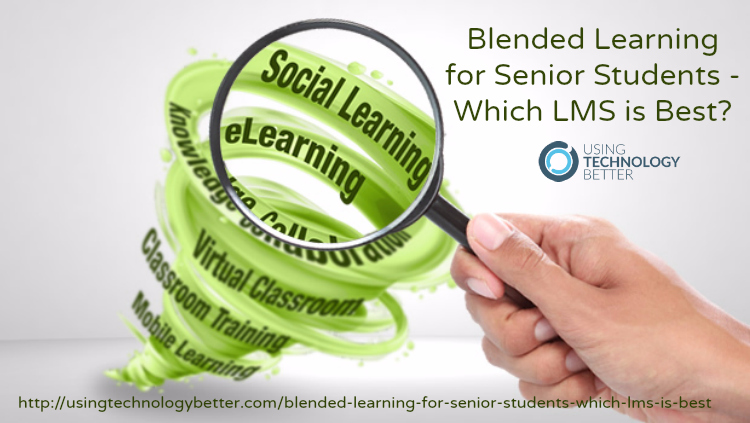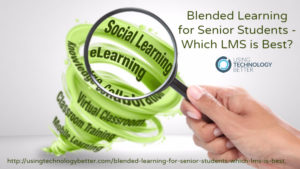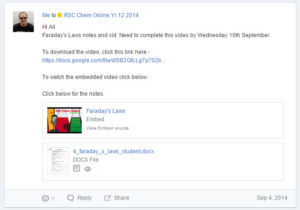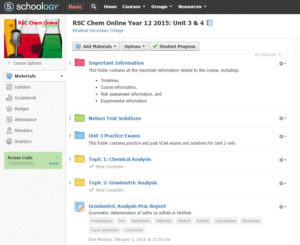A guest post by Adam Vardanega. You can follow Adam on Twitter & Google Plus
The pressures of senior schooling can be challenging for many students. More difficult content, conflicting time demands, looming exams and juggling part-time work can all add-up to a stressful couple of years.
A blended learning approach can provide students with the flexibility and support they need to manage their learning more effectively.
A blended learning model encompassing viewing/reading material prior to class (often referred to as a ‘flipped’ approach) allows the students to cover and digest the material at a pace suitable to their needs and level.
It also gives them the opportunity to focus more heavily on topic areas they find most challenging, and easily catch-up on content they miss while absent.
Face-to-face time can then be utilised for the actual application of the theory, with the teacher on hand to help out.
After class, students can use worked example videos to review the theory application as they continue their private study and practice exam questions. Self-grading quizzes and prompted group discussion questions also allow for students to keep track of their progress and continue to learn from each other after hours.
Moving to a blended learning model can be a gradual journey of classroom change.
You might just start with a few pre-lesson videos, or an after-class discussion topic and build your approach and material from there. Regardless of how you start out, an online learning and collaborating system is usually a key part of the blended learning model.
Choosing one which best suits both your and your students needs can help make the journey simpler and more effective.
[bctt tweet=”An online learning and collaborating system is a key part of the blended learning model, but which #LMS is best? Find out at”]
Two popular learning management tools are Edmodo and Schoology.
The great thing is that they are both free to use in your classroom. When I first embarked on a blended learning approach with my senior Chemistry students, I chose Edmodo as the class learning and collaboration platform.
The product had a great social learning focus, with a friendly and simple interface that made it easy for students to ask questions and share their knowledge and findings. Edmodo was popular with my chemistry students, so I also expanded my use of it to some of my junior classes.
This year, I decided to move my senior students to Schoology. In addition to the social learning tools, I found Schoology had other features more suited to the needs of my VCE course. The platform is more structured and organised, making it easier for my students to find and access their coursework.
It has richer progress tracking and statistics, and I’ve got more control of when students can access materials. Overall, Schoology is a more mature system. It is suited better to mature students (I continue to use Edmodo with my junior students) and is great preparation for the types of LMS they will likely use if they continue on to tertiary studies.
There are also other learning management and collaboration tools that you can explore for use in your own blended classroom. Many Google Apps schools utilise Google Classroom, Google+ or Google Sites. It’s even possible to design a great combination solution using a few different tools.
I’ll be sharing my ideas and showing participants how to set up an effective LMS to support blended learning at the Using Technology Better Conference.
In my ‘Learning management made easy’ session, you’ll have the opportunity to play with each of these tools and discover which Learning Management tool best suits your needs.




















